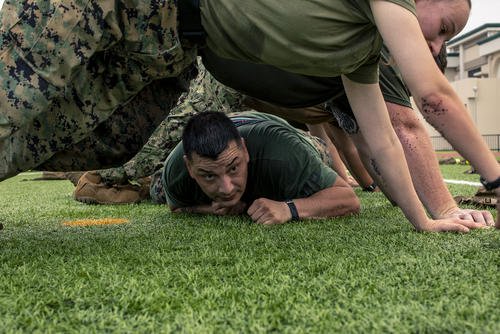Not all injuries are created equal, but when an injury prevents you from running for more than six months, you should build back up like a beginner. Depending on the injury, the progression to return to your pre-injury state will take several months.
Be patient and focus on the elements of fitness you may not have paid much attention to in the past. This running/endurance athlete who sent the following email should recover and rebuild his running before gaining enough strength to excel in the Army Special Forces training pipeline.
This may be a perfect opportunity to focus on strength, power and load-bearing durability while his running miles are low.
Here is his question:
I am recovering from an illness/injury that sidelined my running for upwards of six months. I'm ready to begin again. I achieved a high level of fitness previously (18:00 5K, 30:00 5-mile, 5:07 mile, 50 miles a week), but I have never had to restart from such a low mileage. I plan on attending Army SFAS in 12-18 months. What would your suggestion be for a progression over that period of time? I'm cleared up to train, but I'm not sure how best to start from this much of a regression. Thanks, Sam
Read Next: How to Gauge Where to Build a Fitness Program
Sam, I suggest focusing more on building a foundation of strength during the low-mileage phase of your recovery. You should treat yourself like a beginner for at least a month, and after that, progress moderately at 15% a week. Start with running a mile a day for five days in a seven-day week.
As long as that does not hurt you, start with adding a mile a week until you get to 10 miles a week. This will take several weeks, during which you can focus on building the strength and durability necessary for load-bearing. Many running athletes lack the strength foundation required for Army Special Forces load-bearing activities (rucking, equipment carry/grip, personnel carry). Make this your primary focus and let your running progress be a secondary focus for at least three months. Then, after a solid strength buildup, start to progress your mileage by 15% a week and begin to add rucking as well.
For rucking, start with 10% body weight and progress up to 25% over the next 6-8 weeks (increasing by 5% every two weeks). You should build up to 50-60 pounds in a ruck when you have maxed your steady progression in both weight and miles. We usually turn our long run weekend into a long ruck as if you would progress with a marathon-type training plan.
Once you've kicked off all the rust, you could probably start progressing with your faster pace fairly rapidly. If you incorporate cardio, I would recommend nonimpact versions, with a focus on biking over running, and gradually build up to 50% of both cardio options. And in a month or two, start running more than biking.
When progressing with any activity, I like to use block periodization. In this system, you focus on three weeks of running progression, then deload to reduce mileage and focus on lifting every fourth week. Use this week to assess yourself, make sure there's no pain and then really start ramping up the speed and volume each week for another month.
If you took six months off from running, I would estimate it would take at least three to four months to build back up to your previous level. This is a bit more aggressive than I would do normally, but given your athletic history, load-bearing/rucking will be your issue, not running.
These options help you gradually rebuild your cardio fitness, but do not neglect strength training, especially while your running miles are lower than usual. Remain open to incorporating nonimpact cardio activities, squats, lunges and load-bearing exercises to strengthen your heart, lungs and legs safely for upcoming professional challenges.
Explore more articles in the Military.com Fitness Section on fitness testing, speed building, endurance and other essential fitness components needed in tactical professions.
Want to Learn More About Military Life?
Whether you're thinking of joining the military, looking for fitness and basic training tips, or keeping up with military life and benefits, Military.com has you covered. Subscribe to Military.com to have military news, updates and resources delivered directly to your inbox.



















